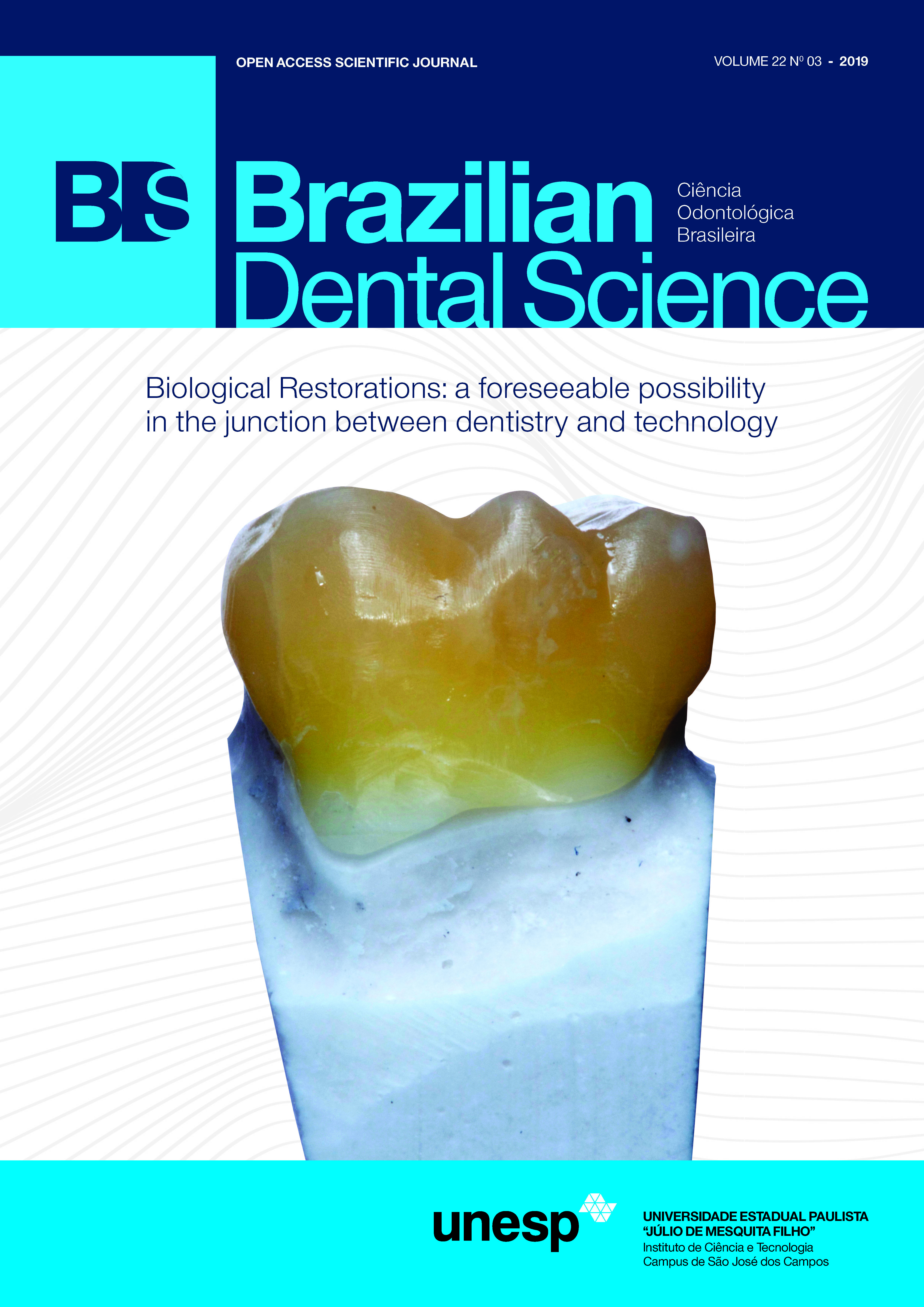Effect of Diode Laser Irradiation of Bonding Agents Before Curing Versus Standard Bonding Protocol on the Shear Bond Strength Between Resin Cement and Dentin
DOI:
https://doi.org/10.14295/bds.2019.v22i3.1796Resumo
Objective: This study aimed to evaluate the effect of diode laser irradiation (970 nm) of a one-step self-etch adhesive (Clearfil S3Bond/CS3B) and of the bonding agent of a two-step self-etch adhesive (Clearfil Liner Bond F/CLBF) placed on dentin before polymerization on the shear bond strength.Material and methods: Forty sound premolars were sectioned buccally to obtain flat dentin surfaces. The specimens were divided into 4 groups (n=10): Group (OS) – CS3B + polymerization. Group (OS-L) – CS3B + laser + polymerization. Group (TS) – CLBF (bonding agent only) + polymerization. Group (TS-L) – CLBF (bonding agent only) + laser + polymerization. The diode laser was irradiated through an 8 mm bleaching tip for 10 seconds, (0.4 W, 10 Hz, 4 J). All samples were cemented to composite blocks submitted to 4000 thermal cycles. The samples were tested for shear bond strength in a universal testing machine. Data obtained was analyzed using Two-way (ANOVA) (P ? 0.05) and the Bonferroni post-hoc test. Representative samples from each group were analyzed using scanning electron microscopy (SEM). Results: GroupTS-L– (7.43 MPa) displayed statistically significant higher shear bond strength in comparison to that of group TS – (5.13 MPa). No statistically significant difference was found between group OS-L – (6.49 MPa) and group OS – (7.28 MPa). Group TS-L exhibited the highest resin penetration beyond the hybrid layer under SEM. Conclusions: Diode laser irradiation of a bonding agent placed on dentin without prior priming increased the bond strength to dentin and is promising as a new dentin adhesion protocol.
Downloads
Downloads
Arquivos adicionais
Publicado
Como Citar
Edição
Seção
Licença
TRANSFERÊNCIA DE DIREITOS AUTORAIS E DECLARAÇÃO DE RESPONSABILIDADE
Toda a propriedade de direitos autorais do artigo "____________________________________________________________________" é transferido do autor(es) para a CIÊNCIA ODONTOLÓGICA BRASILEIRA, no caso do trabalho ser publicado. O artigo não foi publicado em outro lugar e não foi submetido simultaneamente para publicação em outra revista.
Vimos por meio deste, atestar que trabalho é original e não apresenta dados manipulados, fraude ou plágio. Fizemos contribuição científica significativa para o estudo e estamos cientes dos dados apresentados e de acordo com a versão final do artigo. Assumimos total responsabilidade pelos aspectos éticos do estudo.
Este texto deve ser impresso e assinado por todos os autores. A versão digitalizada deverá ser apresentada como arquivo suplementar durante o processo de submissão.




























